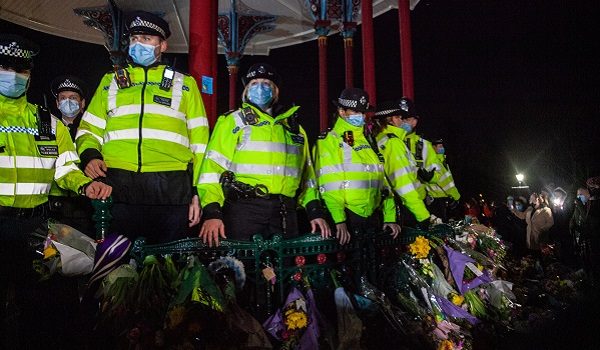Police targets redux
The shocking killing of Sarah Everard has brought renewed focus on the importance of raising detection rates for sexual offences and other crimes. As ministers prepare to unveil a new ‘outcomes framework’ for police forces, Crest Advisory chief executive Harvey Redgrave asks whether this could be an opportunity to tackle the problem.
Ever since the Prime Minister delivered on his promise to fund an additional 20,000 police officers, there have been hints from government ministers about wanting to see the police make ‘measurable improvements’ in return for additional spending.
This is not surprising. No 10 will be acutely aware that the political gains that come with boosting officer numbers have a shelf-life: if violence continues to rise and the detection of crimes continues to fall, claims about additional spending will sound increasingly hollow.
The question is what ‘measurable improvements’ should the Home Office be seeking to measure? As I wrote over a year ago, targets which are excessively input-focused risk driving perverse behaviours. An arrests target might fall into this category, since it would risk incentivising the police to focus on those who are easiest to arrest, rather than on the most dangerous or elusive criminals.
On the other hand, targets which are drawn too widely – say by focusing purely on outcomes – have the opposite problem: they are too removed from the core activity we ought to be measuring. A target based purely on cutting crime could be an example of this. Whether or not such a target is delivered or missed will be affected heavily by factors outside of the police’s control, so it is a poor way to measure performance.
In recent months, speculation has grown that the Home Office intends to reprise the model that served the current Prime Minister when he was Mayor of London. This involved the Metropolitan Police Service (MPS) being set a ‘20: 20: 20 challenge’ – reducing volume crime by 20 per cent, boosting public confidence by 20 per cent and cutting costs by 20 per cent.
It is easy to see why the Home Office might be keen on a ‘lift and shift’ of the old MOPAC (Mayor’s Office for Policing and Crime) framework. It has the merit of being clear and simple to understand. If setting a numerical target to cut crime by 20% seems slightly arbitrary (why not ten per cent or 30 per cent?), perhaps that matters less than the fact that doing so would signal ambition and galvanise effort around a common goal. Perhaps just as importantly, the current Policing Minister was one of the architects of the MOPAC framework and so is personally invested in its success.
Yet adopting a version of the London system for all 43 forces in England and Wales would not come without risks. The current Mayor of London, Sadiq Khan, has been critical of the system of targets he inherited, describing it as overly ‘rigid’ and arguing it meant the MPS focused on reducing high volume offences (also known as the ‘MOPAC 7’), such as burglary and car theft, at the expense of more serious and complex crimes. In particular, it was claimed that an HMIC (Her Majesty’s Inspectorate of Constabulary) inspection into child protection at the MPS in 2016 indicated that the pressure to achieve the ‘MOPAC 7’ targets had led to some of the most serious crimes against vulnerable people, such as child sexual exploitation, ‘not being given the attention they needed’.
Ministers will be hoping such criticism proves to be unfounded this time around. Partly because any crime targets the Home Office set will probably focus on the more serious end of the offending spectrum, such as serious violence, rather than more traditional volume crimes. But also because forces will continue to be held to account by locally elected police and crime commissioners, which will ensure sufficient focus on local concerns.
Nonetheless, there are inherent problems with systems of accountability based on outcome-based targets. Serious violence is a complex and multi-layered phenomena and while effective policing is a crucial component in bringing it down it is still just one component. Reducing violence by a fifth will require the whole of government to play a role, from safeguarding services to schools, youth offending teams to probation. Does it make sense to set a single numerical target for the police to cut violence, given many of the levers lie outside their control? Moreover, will it reward the most innovative forces (for example, who proactively seek to uncover ‘hidden’ crimes), or simply encourage forces to downplay the scale of the problem?
Arguably a better approach would be to design targets which explicitly measure things which are directly within the police’s power to control, such as the detection of crimes. Going down this route would require learning lessons from the past. A substantial evidence base exists to warn against the dangers of generic detection targets, such as the ‘offences brought to justice’ target introduced in 2004, which, it was argued, incentivised the police to focus on ‘low hanging fruit’, ie, easier to detect, petty crimes. But a more focused detection target – focused on, say, serious violent and sexual offences as a proportion of police recorded crime – might avoid these pitfalls.
Clearly, numerical targets – on their own – are not a panacea and need to be complimented by a more rounded (and ideally qualitative) assessment of police performance, which recognises the full range of police activity, from crime prevention through to managing vulnerability. Nonetheless, there is a role for intelligently designed targets in holding public services to account and driving up performance. It is hoped that in reintroducing them, the Home Office has done its homework.
This article was originally published on the Crest Advisory website and is republished here by kind permission.






